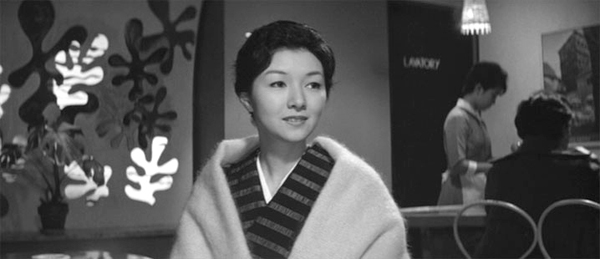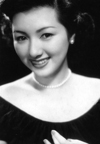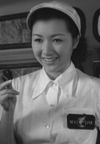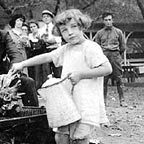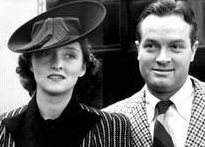 The lovely and talented Dolores Reade Hope, longtime wife to comedian Bob Hope and a talented singer in her own right, died yesterday at the tender age of 102. We thought we’d pay our respects by rerunning the following post, which first appeared here at Cladrite Radio on March 19, 2010.
The lovely and talented Dolores Reade Hope, longtime wife to comedian Bob Hope and a talented singer in her own right, died yesterday at the tender age of 102. We thought we’d pay our respects by rerunning the following post, which first appeared here at Cladrite Radio on March 19, 2010.
Rest well, Dolores.
* * * * *
Yesterday, we shared with you one of the spring-themed songs we’re playing these days on Cladrite Radio, and we’ve decided to follow that up today with one of the recordings of Irving Berlin‘s “Easter Parade” that we’ll be sprinkling throughout our broadcasts for the next two weeks or so.
Our library boasts several renditions of the song, fine performances by the likes of the Jimmie Lunceford Orchestra, Bing Crosby, Djano Reinhardt, Gene Austin, and Leo Reisman and His Orchestra (with none other than Clifton Webb on vocals).
But our favorite is a 1933 recording by violinest Joe Venuti and his orchestra. And while Venuti and his cohorts acquit themselves admirably, it’s the vocalist who most made our ears perk up.
 We did a little digging to ascertain which nightingale it was who delivered the lovely, languid vocals on this recording, and as it turned out, it was Dolores Reade. If that name rings a bell, it’s likely because Ms. Reade gave it up (along with, for the most part, her singing career) to marry comedian Bob Hope.
We did a little digging to ascertain which nightingale it was who delivered the lovely, languid vocals on this recording, and as it turned out, it was Dolores Reade. If that name rings a bell, it’s likely because Ms. Reade gave it up (along with, for the most part, her singing career) to marry comedian Bob Hope.
A native New Yorker, Reade was born Dolores DeFina in the Bronx (or Harlem—there’s conflicting info out there), and in the 1930s, she changed her name and began singing on the NYC nightclub circuit. One night in 1933, Hope accompanied a pal to the Vogue Club, promised only that he would get to “hear a pretty girl sing.”
Hope made it a nightly practice to be at the Vogue Club when Dolores performed, and his devotion soon paid off, as the two were married a few months later. She then joined his vaudeville act, but eventually gave up performing (except when she toured with Hope to entertain the troops) to be a mother and homemaker.
Encouraged by Rosemary Clooney and others, Dolores would eventually record four or five CDs in the 1990s, sounding much younger than a woman in her eighties, but it’s painful to think of the remarkable work she might have done had she been recording all along, from the 1930s forward.
Joe Venuti and His Orchestra, feat. Dolores Reade — “Easter Parade”





